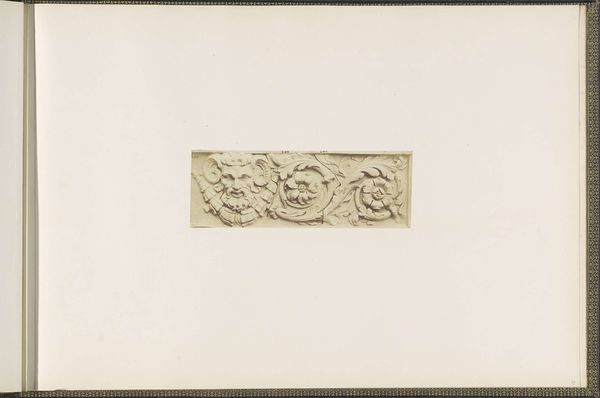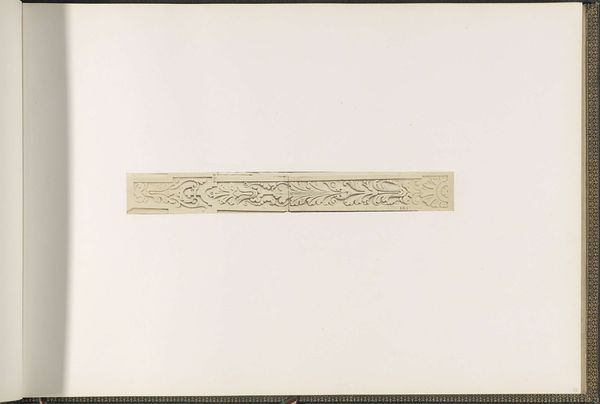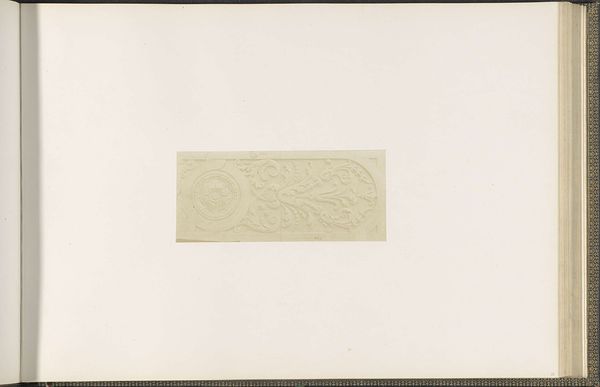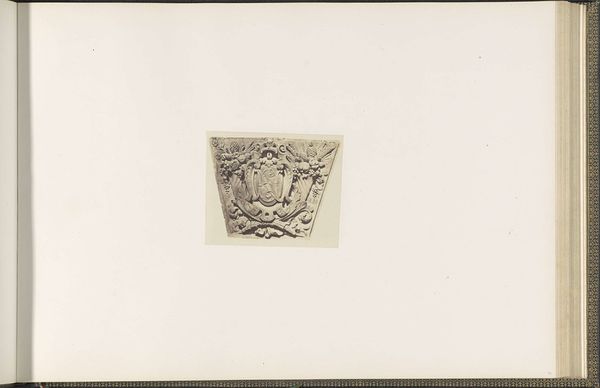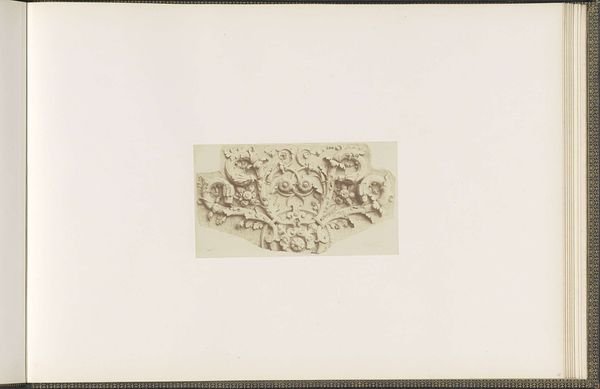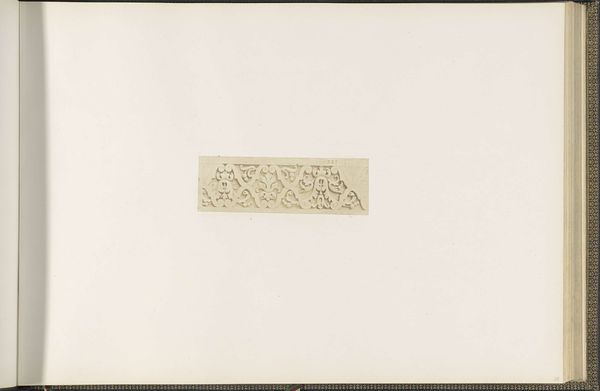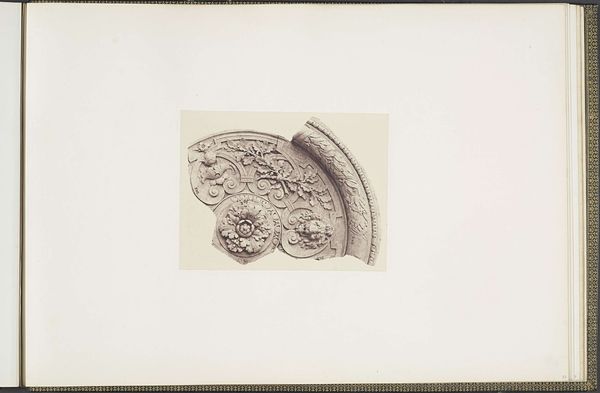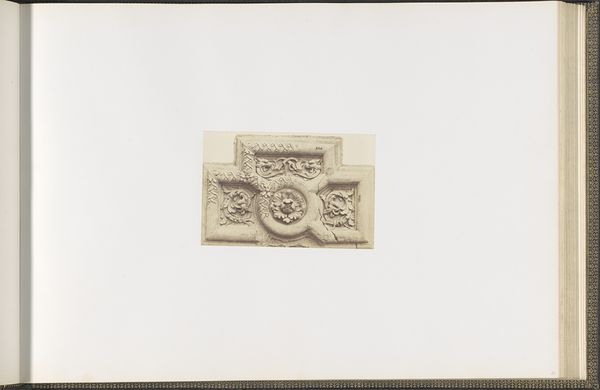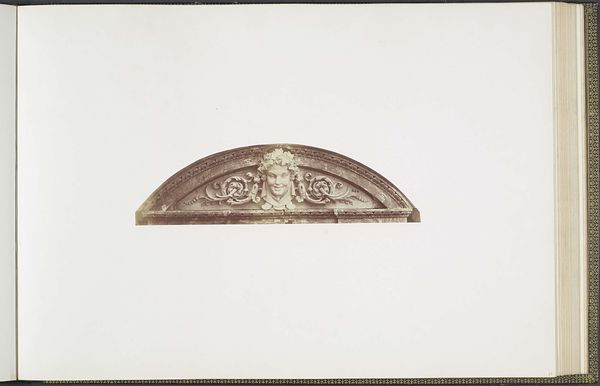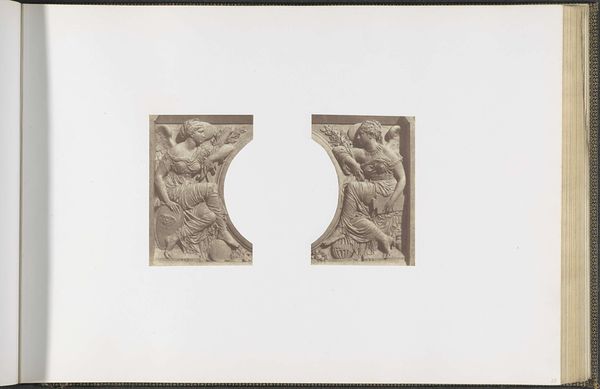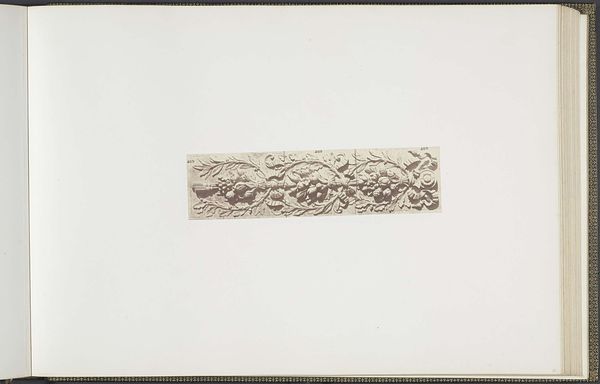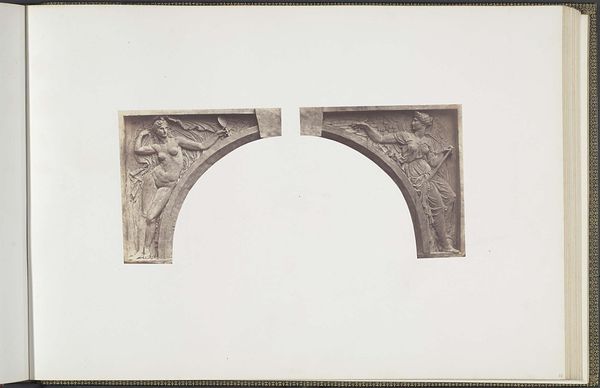
print, photography, architecture
#
portrait
#
neoclacissism
# print
#
classical-realism
#
photography
#
architecture
Dimensions: height 378 mm, width 556 mm
Copyright: Rijks Museum: Open Domain
Curator: Here we have an image titled "Gipsmodellen voor versiering op het Palais du Louvre," or "Plaster models for decoration on the Palais du Louvre," taken by Edouard Baldus circa 1855 to 1857. It resides in the Rijksmuseum collection. Editor: My immediate impression is one of somber elegance. The monochrome palette emphasizes the texture and form, and the cropping isolates the ornamentation. There's a monumentality implied, despite its obvious function as a decorative element. Curator: Absolutely. Let's dissect the formal structure. Notice how Baldus captured the intricate details of the plasterwork—the flowing acanthus leaves, the volutes, the strong lines that define the entablature. The play of light and shadow articulates the classical realism, imbuing the ornament with life. Editor: And what a loaded history is present! The acanthus, a timeless symbol of enduring life and rebirth, consistently reappears across different eras. This ornament isn't merely decoration; it connects us to ancient Greece and Rome, suggesting an ambition to embody their values within this 19th-century context. The Louvre, a place of both royalty and republic, carries potent symbolic weight. Curator: The composition also merits close attention. The deliberate framing highlights a portion of the entablature and a corner detail. Baldus’s strategic placement underscores the interplay of horizontal extension and vertical support; it suggests that decoration and the overall architecture rely upon one another. Editor: This also highlights the complex visual vocabulary deployed to associate power. During the Second Empire, Napoleon III used these references to legitimize his rule. In these images, you get both propaganda and the subtle continuation of cultural memory being physically built into Paris itself. Curator: Yes, and by documenting these models, Baldus gives permanence to something inherently transitional. It's a photographic record of an artifact that exists only to inform the final construction. It really asks what it means to produce “original” work and questions traditional views of artistic innovation. Editor: What started as a fairly simple picture yields such complex depths when decoded. From symbols of classical renewal to observations on photographic art, it’s quite potent. Curator: Agreed; seeing the structure and composition analyzed side-by-side with the potent meanings embedded really does give a rich and compelling perspective on it.
Comments
No comments
Be the first to comment and join the conversation on the ultimate creative platform.
